Certainly art lovers and scholars are familiar with the contribution that the city of Livorno made to the vicissitudes of Italian art between the 19th and 20th centuries. The capital of the Tuscan province of the same name, although it attests as a relatively small and peripheral city, was the birthplace of an astounding number of artists of primary contribution to some of the most significant experiences in Italian art. The list is very long and includes such important academics as Giuseppe Maria Terreni and Enrico Pollastrini, two of the protagonists of the Macchia, Serafino De Tivoli and Giovanni Fattori, and a host of other talented painters, among whom Amedeo Modigliani, Plinio Nomellini, Vittorio Corcos, Mario Puccini, Renato Natali and Oscar Ghiglia stand out. Yet despite the boundless creative density, even the most knowledgeable would hardly associate Livorno’s artistic circumstances with what was Italy’s first and probably only avant-garde, Futurism. There are interesting records of this movement as well, however: in fact, Francesco Cangiullo, a writer, poet and painter who took an active part in early Futurism and the drafting of Futurist manifestos, and Osvaldo Peruzzi, probably the last exponent of the avant-garde, were active in the Tuscan city. Even less well known, but certainly not without interest, is the story we are about to tell, and which in the span of a handful of years carves out a role as the radiating center of Futurism in Tuscany, in Livorno, or rather in Antignano, a seaside hamlet south of the Labronian city.
Indeed, these events have as their theater one of the luxurious villas that frame the seaside promenade, “the most sumptuous of the villas of Antignano, especially of those that are not very modern,” as Giovanni Wiquel, a careful Livorno annalist, apostrophizes it. It all began when the building known today as Villa Pendola was purchased in 1915 by a wealthy Florentine family, the Conti family, whose children included that Primo Conti (Florence, 1900 - Fiesole, 1988) known for being theenfant prodige of Italian painting at the dawn of the 20th century (as the important exhibition held in Seravezza dedicated to him and curated by Nadia Marchioni titles). Moreover, the Florentine painter was not the first great artist to be a guest at the villa, for years earlier, around 1890, when the building belonged to the Florentine businessman and politician Antonio Civelli, Giovanni Fattori stayed there for long periods of time during the summers, giving painting lessons here to the wealthy owner’s daughter, Corinna, who is also portrayed in an exquisite painting entitled La scolarina.
When Conti together with his family began spending summers in Livorno he was but fifteen years old, but he had already taken his first steps into the world of art. In fact, after directing his interest in the study of the violin, in which he demonstrated great virtuosity, in 1910 his natural inclination also for drawing convinced his parents to send him to lessons from the painter Eugenio Chiostri. The following year he painted his first oil painting, a self-portrait of great psychological introspection. In 1913, while visiting the first exhibition of “Lacerba” in Florence, he came into contact with the Futurists, attracting the interest of Carrà, Marinetti, Soffici and others, and on that occasion Papini gave him a postcard with a dedication, “To the youngest and most intelligent visitor to the Futurist Exhibition.” From that meeting, his relationship with the group began to strengthen, abetted by his secret attendance at their evenings, and his friendship with Umberto Boccioni. At the same time in Viareggio, where the Conti family had a house, the young artist frequented the home of Plinio Nomellini, a meeting place for many important intellectuals of the time: Grazia Deledda, Ada Negri, Galileo Chini, Alberto Magnelli, Eleonora Duse, Giacomo Puccini, and Lorenzo Viani. In short, the adolescent Conti had already made his mark with some of the most important protagonists of the Italian art scene, and was in fact perfecting his militancy in the handful of Futurists.
Memories of his Livorno residence abound in his autobiography entitled The Blackbird’s Throat: “I stayed at Antignano from March to October. The villa was large and had a small harbor with a long pier. To reach it one had to go through a tunnel under the road. The countryside was close to the sea, empty of houses as in some of Fattori’s tablets. I liked Livorno for its air, one still lived as in a nineteenth-century print [...]. I liked the black anthracite cliffs that from Antignano shine in the sun all the way to Ardenza. Every now and then it breaks off to make way for a small beach where bathers used to open their umbrellas.”
At Antignano, Primo Conti also produced numerous works including drawings and paintings, some of which are of nodal importance in the Florentine’s biography, and testify to his restless artistic quest in multiple directions. In 1916 he painted Fiori allo specchio, a canvas now in a private collection, which still shows the young painter’s fascination with Cézanne’s lesson, deepened thanks to his frequentation of Alfredo Müller’s studio: “Müller spoke to me of Cézanne with a force of evocation that made me feel him among us.” The following year Conti deepened his relationship, evidenced by a rich correspondence, with Tommaso Marinetti and Giacomo Balla, who enthusiastically welcomed the works of that young and innate talent.
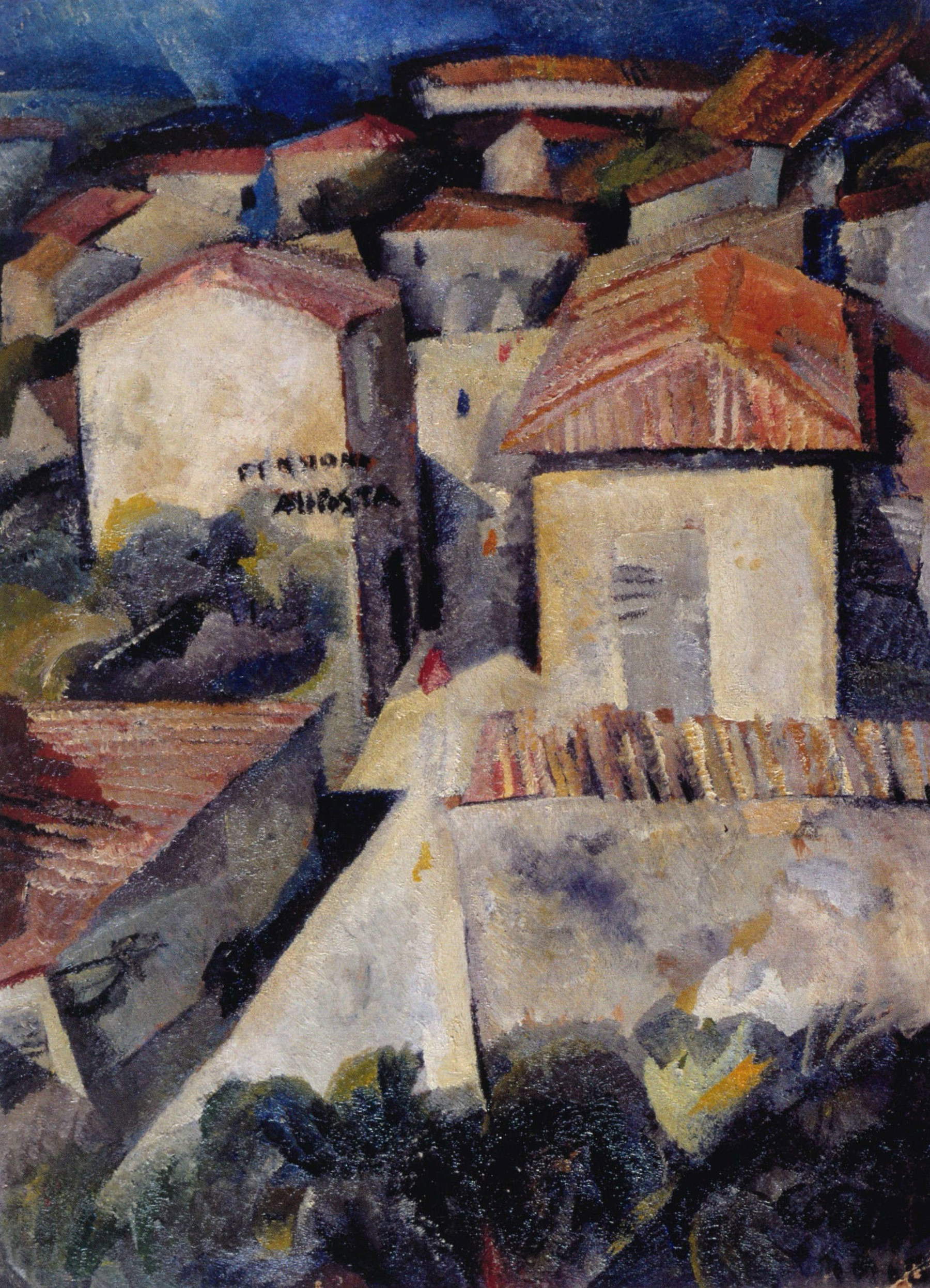

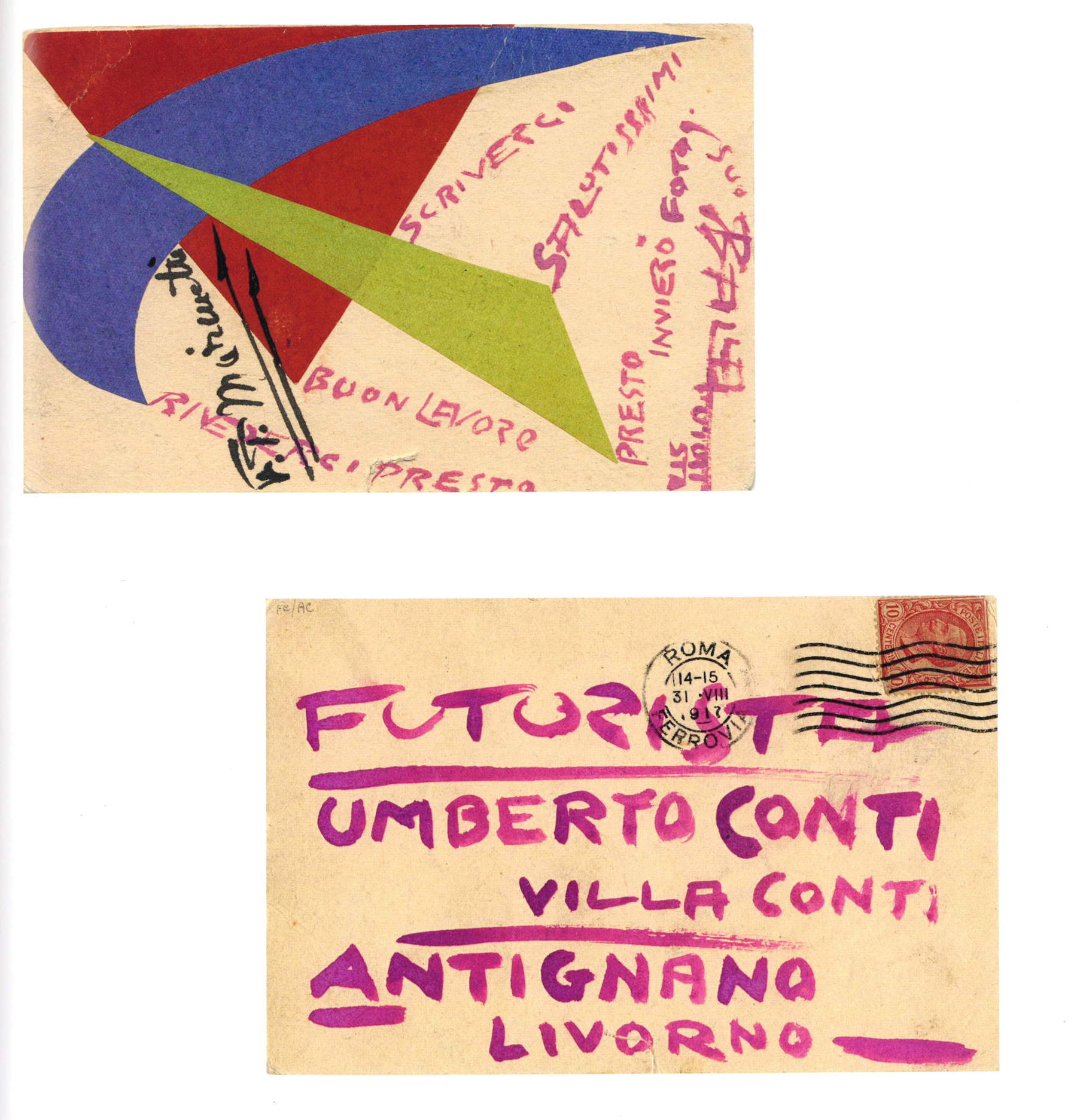


The enthusiasm of these encounters definitively pushed the Florentine to embrace Futurist poetics, and it was upon his return to Antignano that he produced some painting essays where the dynamic decomposition of the Futurist matrix was reinterpreted. In the famous panel La cocomeraia, space is deformed and compressed to go along with the rapid movement of the female figure rendered with a brilliant palette still mindful of the earlier fauve experience; moreover, he includes pieces of reality with the collage technique, such as a “sheet of tin foil from chocolates and a wad of tow.” “The vision of that painting,” he would write, “had hit me like a jet of cool water, seeing a stall in the shadows of a little street in the center of Livorno, where my hairdresser’s was, and was made clear to me in the glacial reflections of the mirror that I found before me shortly thereafter, as I sat down to shave.”
This was followed by other works also made in the Leghorn hamlet, such as Case Coloniche and Antignano dall’alto. In the latter painting, made from the terrace of his villa, we find the early cubist experiences of Picasso and Braque, which lead to the conception of buildings as large cubic volumes, mediated, however, by a dusty environmental haze that the Florentine casts over the scene, making it more emotional and dreamy.
In the villa perched on the coast, Conti consummated very important experiences, as much on the artistic side as on the human side. Thanks to the immense availability of space, the secluded and enchanting location of the Livorno accommodation, which in those years saw Antignano as one of the most popular seaside destinations, well taken Villa Conti became a point of reference for many artists and intellectuals particularly those close to Futurism. In fact, it was here that the group of Tuscan Futurists was founded in 1917, to which Roberto Marcello Baldessari, Arnaldo Ginna, Achille Lega, Neri Nannetti, Emilio Notte, Ottone Rosai, Giulio Spina, Lucio Venna and Vieri Nannetti belonged, in addition to Conti, and which was made official in the pages of “Italia Futurista” on December 31 of the same year.
In 1919, at the end of the hostilities of the world conflict, Primo Conti returned to Livorno, where together with Corrado Pavolini he founded the magazine “Il Centone.” The same year the villa witnessed two other important events: Santi Ceccherini, a general in the Italian army who had distinguished himself in the defense on the Isonzo, and involved by D’Annunzio in the Fiume enterprise, requested the painter to have the use of his villa for an evening to organize the defenses of the irredent city. The building had been chosen because of its features, as being equipped with a small harbor and an underground passage connecting it with the house could be used allowing conspirators to meet without being noticed by the authorities. “I do this for Italy,” the general told Conti, “this prayer I address to you in the name of D’Annunzio to whom I said I would come to you.” The painter animated by patriotic instincts managed to convince the family of the goodness of the undertaking, and to leave the villa to the subversives.
1919 is also the year that records a new transition in Conti’s painting: “I was in fact between Futurism and that metaphysics which I was then rejecting because of certain of its Nordic origins,” but the germs of which can already be seen in the painting Drunken Sailor, in which he shows an interest in the “truce people, scum and the last layer of society” that the first Milanese Futurism had ignored. This transition finds fulfillment when even the artist’s last resistances are overcome: at this stage Primo Conti took refuge in another small villa adjoining the Conti property, which his father had just purchased and for that reason still lacking furniture, here the artist painted “with only the company of the wind.” He thus realized Il Limonaro: “I had started with a very disciplined construction of forms in its contemplative values: then, at a certain moment, an almost wild need came to me to animate it by putting eyes, nose, mouth and a large white pipe on it [...]. There was in this kind of Metaphysics that came out of Futurism like a scream, a low plebeian regurgitation that made it different from De Chirico’s.”




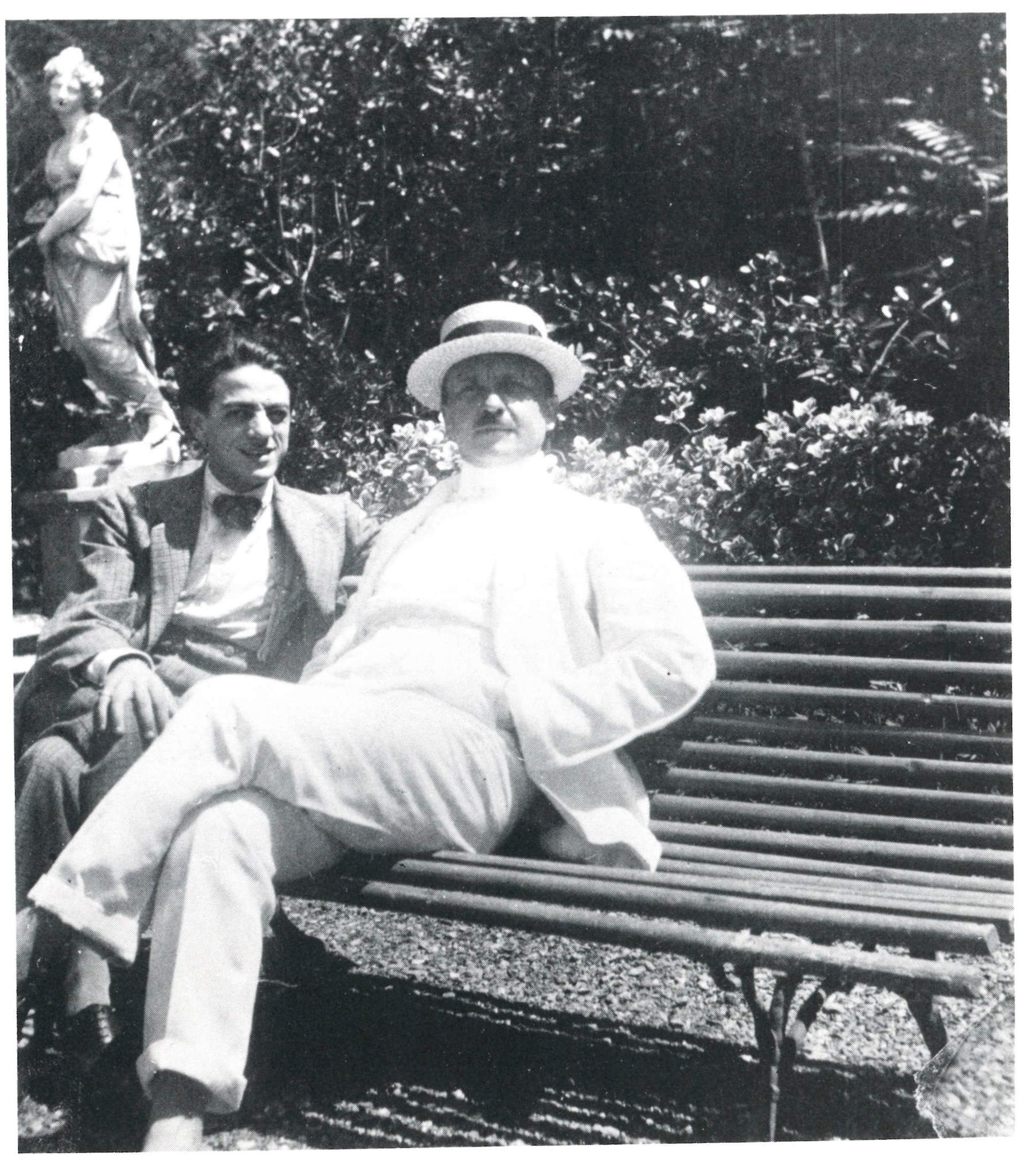
The villa also often saw the deus ex machina of Futurism, Tommaso Marinetti, immortalized in some photos, as a guest: from here he continued to proselytize for his creature. For example, on August 30, 1920, a Futurist evening was organized in the Antignano Castle, then home to the Hotel Cremoni. The charity evening aimed to raise funds to build social housing in the neighborhood. Conti recalls in his biography that in order to have the hall they were forced to agree to have the Livorno poet Rivalta perform, who bore the expenses of the event and who declaimed his interminable poem “Oleanders.” Marinetti, on the other hand, who was supposed to recite Dante’s “Beatrice,” began the evening with a provocation, drawing the wrath of the audience: “Despite his shameful success with professors, Dante deserves to be treated on a par with our Futurist poets.” All returned to quiet, however, when the writer began to declaim the Supreme Poet.
Also in the Leghorn hamlet, Marinetti introduced, to Conti and the others, Benedetta Cappa, his fiancée, thus betraying his historical aversion to women and love affairs. Indeed, contrary to what he preached, he was quite jealous of the woman, so much so that he entrusted her to the care of Primo Conti’s mother when he was forced to go away. In Antignano, with his fiancée, the poet wrote the manifesto of Tactilism: “Last summer, in Antignano, there where the Amerigo Vespucci street, discoverer of Americas, curves bordering the sea, I invented Tactilism. On the workshops occupied by workers garlanded red flags. I was naked in the silken water, torn by rocks, scissors knives foaming razors, among the mattresses of iodine-soaked seaweed. I was naked in the sea of flexible steel, which had a manly, fecund respiration. I drank to the cup of the sea filled to the brim with genius. The sun with its long roasting flames vulcanized my body and bolted the keel of my sail-rich brow.”
In addition to the manifesto, the poet also wrote the novel “Alcove of Steel,” inspired, as Conti reminds us in his autobiography, by the movements of pigeons in their sleep, which the poet studied at night by the light of a lantern in the aviary built in the villa’s garden by the Florentine painter’s father. But the villa was also the setting for another fundamental encounter in Conti’s life: “On that cliff was born the first true love of my life, intense and dramatic.” In fact, one day in 1923 Conti, being on a beach with his drawing portfolio, came across a middle-aged Chinese woman who was drying two very blond children, to whom he asked permission to portray them. While he was immersed in the active graphic work, however, his attention was disturbed as a beautiful young woman “emerged from the sea dripping with sunshine and foam.”
Her name was Henriette Quien, but she proudly preferred to use the male nickname Harry. Born in Holland, she had lived several years in Shanghai with her German ex-husband. Her parents had bought Villa Macchiavelli in Bagno a Ripoli, in the vicinity of Florence, and she and her children and wet-nurse Liung-Yuk stayed in Livorno in the summer at the “Villa Augusta” boarding house, not far from Villa Conti, and immortalized in the painting Antignano from above. From this meeting a love affair was born, although Conti from the beginning was aware of the woman’s propensity for a life of easy and dissolute love affairs.
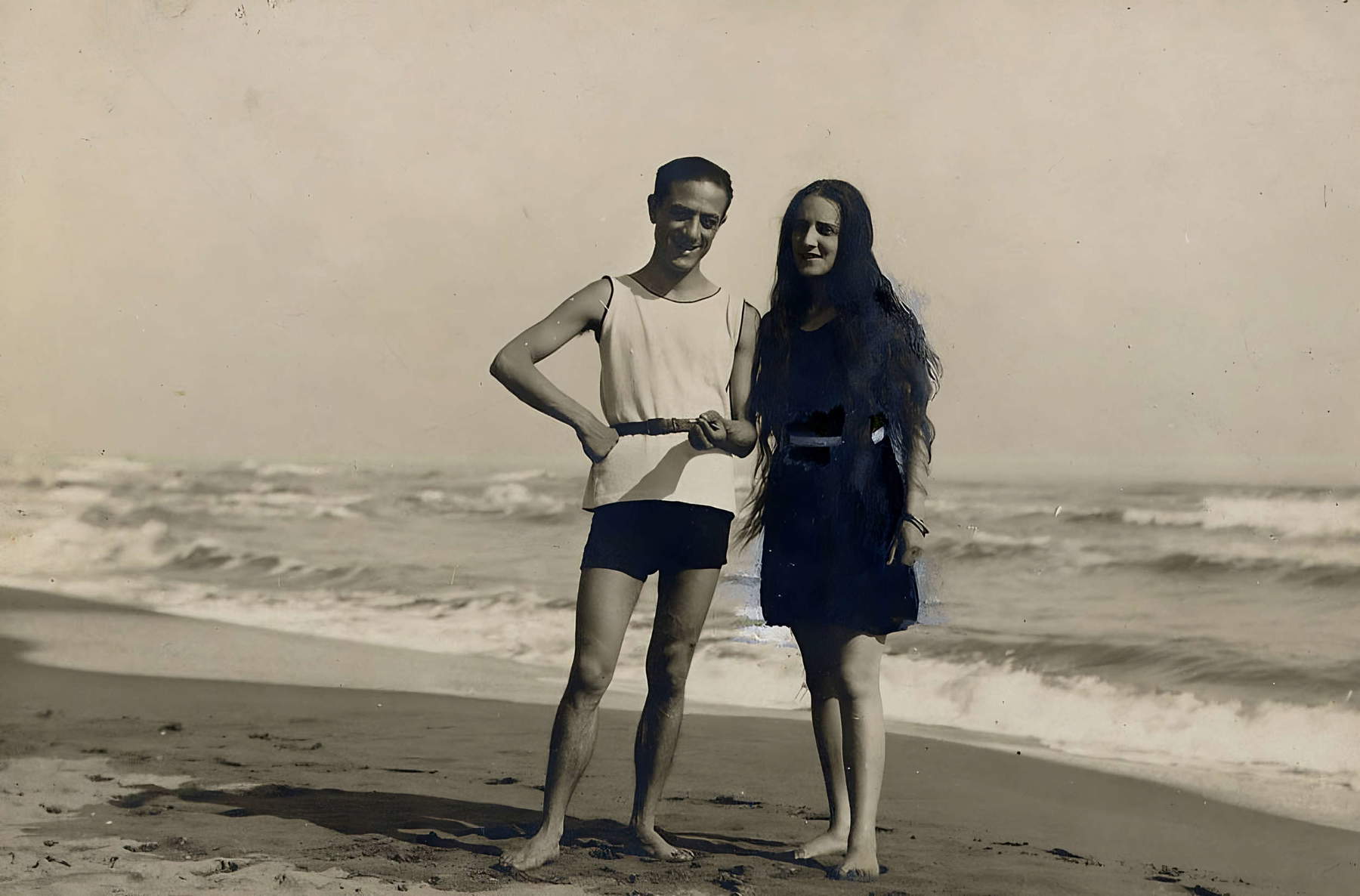
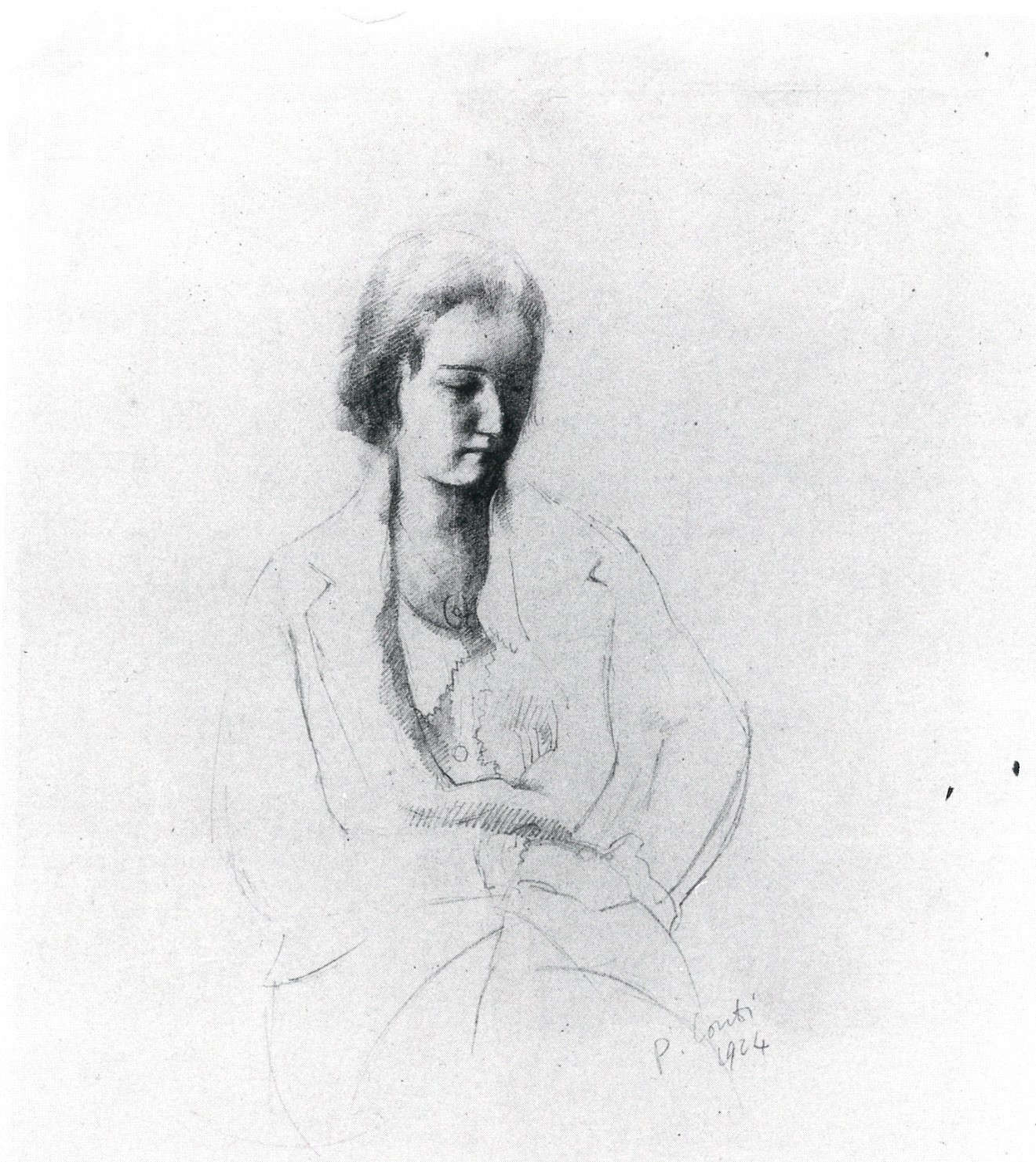



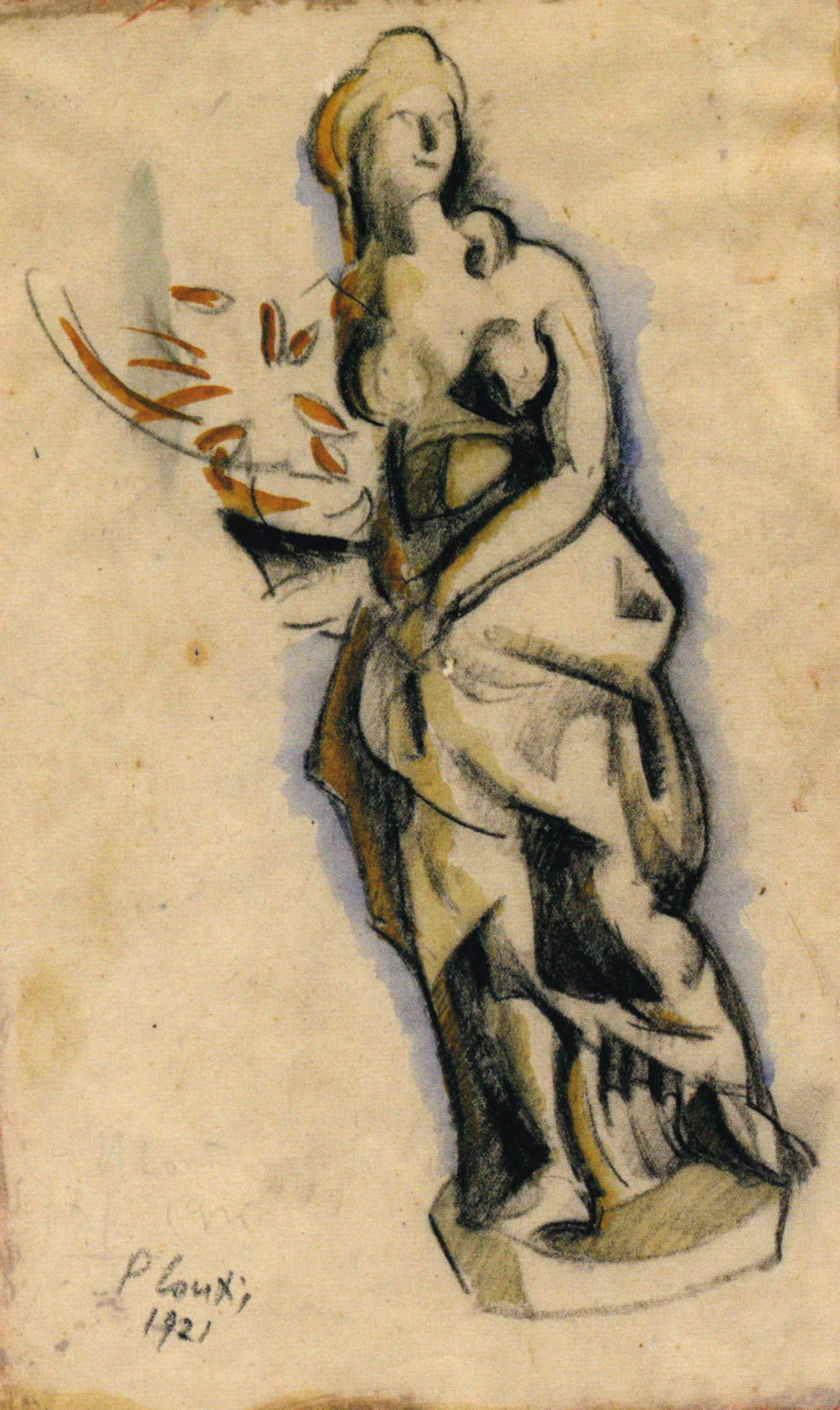
But Henriette captivated him because of her profound intelligence, experiences and cosmopolitan culture, which enabled the artist to learn about other horizons of life and thought that were more modern and more stimulating than those accessible in Tuscany. The woman also brought with her oriental clothes and fabrics, which disclosed a sampler of colors, embroideries and figures never seen by the painter before. Numerous works were also born out of this love affair: the artist eternalized Harry in a painting entitled Russian Jacket and also the children in subsequent paintings, but even more significant were the works that eternalized the maid Liung-Yuk. These are three marvelous pieces made around 1924 that are preserved at the Municipal Gallery of Modern Art in Rome, in the Contini-Bonacossi collection and at the Pitti Palace; thanks to the latter, Primo Conti won the Ussi Prize, earning a fair amount of money and national acclaim.
But the love affair between the two was certainly not without pain and suffering, so much so that Conti decided to sever it in 1927: “The most frightful, and sweet, and atrocious, and pitiful love affair of my life, to which I had given for four years all of myself, died in the same shadow from which it was born [...]. An era of my life, an important one, has closed. Now there is before me an immense space toward which I move with a drunken and convalescent step.” The painter even asked his father to sell the villa in Antignano and buy it back in Viareggio in order to “cut the umbilical cord made of sex and feeling, of magic, that kept me tied to that wonderful woman. Livorno, however, remained in my heart.”
To those who then wondered if there had been any encounters between the Futurist group, which precisely in Antignano had one of the major centers of irradiation in Tuscany, and the post-Macchiaioli of the Caffè Bardi, here is what Conti answered when interviewed by journalist Aldo Santini: “When I was at Antignano I certainly did not deal with the post-Macchiaioli. I felt the need to be modern. Fattori’s followers then, they looked at us futurists with irony, they didn’t deal in turn with a squire with a villa by the sea like me. They belonged to the nineteenth century, so much so that they did not understand Modigliani. My Antignano was very far from Piazza Cavour.”
And in fact the disinterest was really mutual, so much so that in his book “Virtues of Labronian Artists,” Gastone Razzaguta, historical memory of Leghorn artists, recalls only one meeting of Labronian artists with Futurist painters, veined with comedy and irreverence: “Marinetti in the summer of 1913, stayed with us on the Pancaldi baths, taking care not to set foot in the hall of our Exposition, which made him, of course, oibò. In return he demanded to bathe completely naked, and then it was he who, according to the management of the establishment did as was said.”
Warning: the translation into English of the original Italian article was created using automatic tools. We undertake to review all articles, but we do not guarantee the total absence of inaccuracies in the translation due to the program. You can find the original by clicking on the ITA button. If you find any mistake,please contact us.